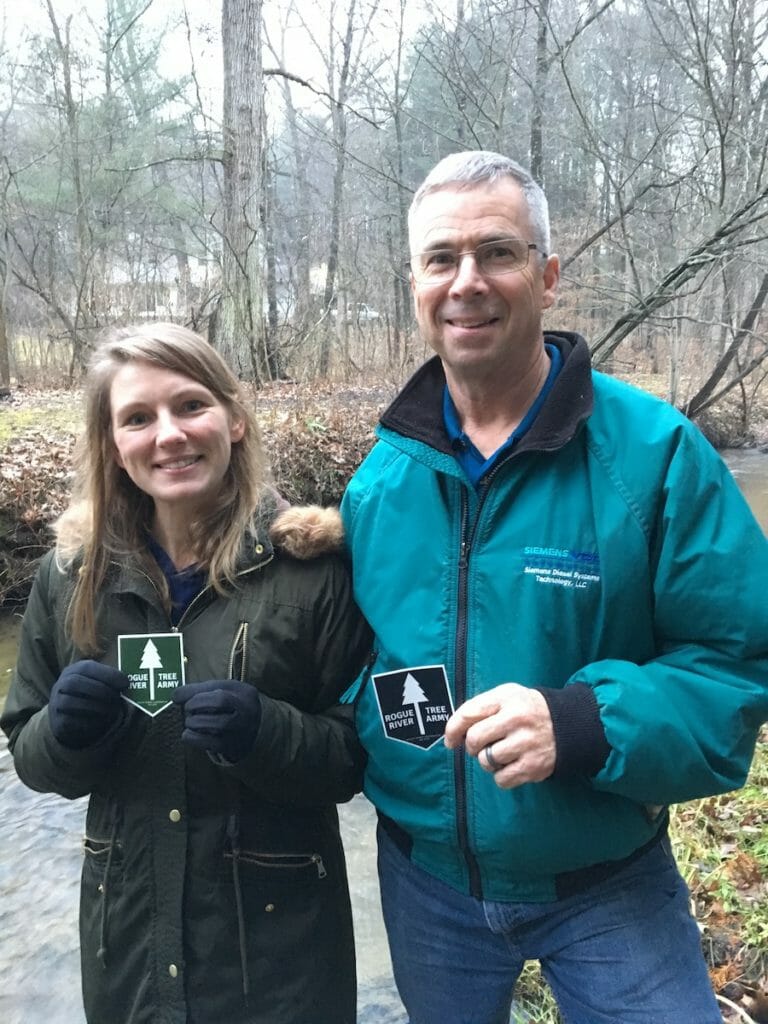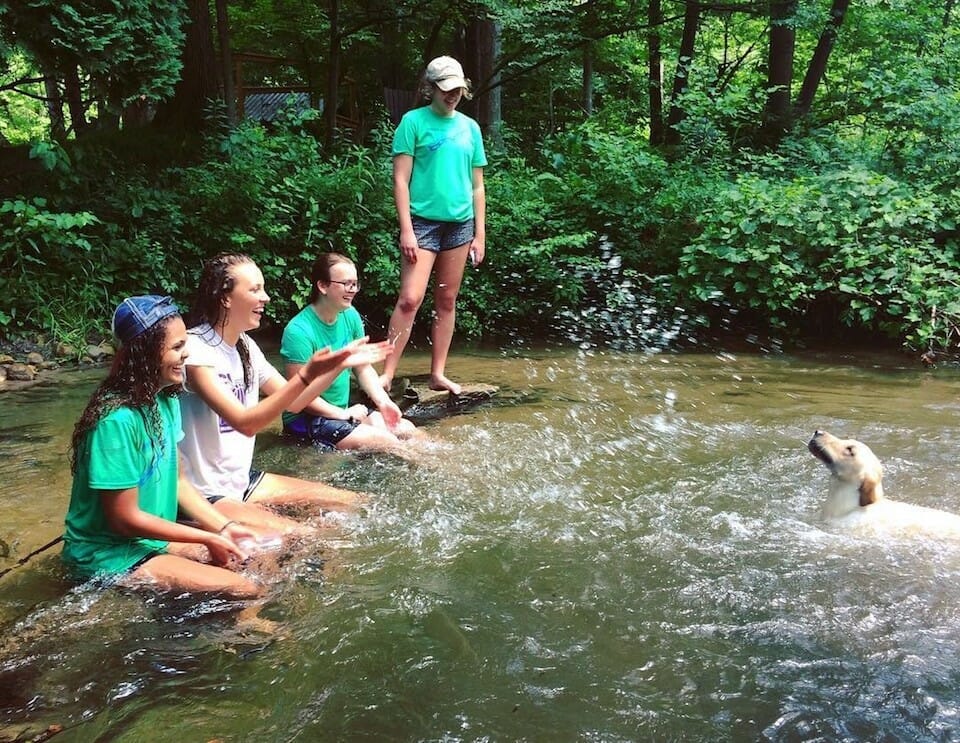By Nick Sanchez and Jamie Vaughan
Urban sprawl, development and agricultural pressures have deforested much of southern Michigan. In rapidly developing areas of southern Michigan, forest and farmland loss continues to this day. Luckily, family forest owners, like the Krug Family, are taking steps to protect their forests and the important waters that flow through them.
Connected large swaths of forests in southern Michigan are rare. Their presence in the region often indicates “unsuitable land.” These lands are often too wet, too dry or too hilly, and often have some combination of special protection from a public agency.
If you look at a satellite photo of western Michigan, you will notice a deep dark green swirl just centimeters north of Grand Rapids, the second largest metropolitan area in Michigan.
This dark green swirl is a contiguous forest that follows and protects much of the Rogue River, a state designated Natural River. This protection extends beyond the river’s edge to protect the corridor, which includes floodplains and forests, and the important coldwater tributaries that flow to the Rogue.
The 42-mile long Rogue River is a unique trout stream. Its 234 square-mile watershed is approximately 30 percent forested, containing hardwood swamps, dry oak-dominated forests on sandy soils, and rolling hills with cold groundwater springs creating over 90 miles of tributaries.
Cold and warm water inputs to the river system provide a range of conditions that support a great number of aquatic species. This diversity and proximity to population centers attracts a great number of anglers to the Rogue. Anglers have great access through the Rogue River State Game Area and many other points along the river.
The story of Krug Family Forest is not your typical tale of woodland ownership, though it is perhaps more representative of a growing ownership segment.
After logging, settlement, parcel division and development, the Krug’s house and their 11 acres of forest remain. The coldest tributary to the Rogue, Stegman Creek, runs through the Krug forest.
The Krug Family Forest and their section of stream is part of a much greater forest and river system, one that makes up a critical corridor of connected habitat for all kinds of plants, fish and wildlife.
With its diversity in topography, soils and stream temperature inputs, and proximity to the climate transition zone, this corridor provides a tremendous availability of niches for plants, fish and wildlife to occupy as they migrate and adapt to a changing climate.

In 2016, Trout Unlimited staff connected with Rick and Melissa Krug when their son Liam was hired on to the Green Team, a summer work force program for high school students who do watershed restoration work for the coldwater conservation organization.
After learning about the Green Team’s efforts to convert lawn to native plants to improve water quality, Melissa enlisted Trout Unlimited’s advice. The Krugs recognized the importance of Stegman Creek and have always kept their property as undisturbed as possible to protect the creek, but they were eager to learn and do more for the coldwater fishery, forest health and wildlife habitat on their land.
The following summer, Trout Unlimited and its Green Team added about 10 feet of native plant buffer where Stegman Creek flowed nearest to their home to reduce the amount of polluted stormwater from the road and roof entering Stegman Creek. Trout Unlimited remained engaged with the family, recognizing that they were unique and important landowners in the watershed and hoped to continue to help them manage their property.
A few years later, a collaborative partnership in Michigan launched the Forests for Fish campaign to promote the connections between woods and water and provide resources to loggers, foresters, agencies, nonprofits and landowners on how to protect and manage forests for clean water.
Thinking back to the Krug Family Forest on Stegman Creek and the family’s readiness to do more, Trout Unlimited, armed with new knowledge from the Forests for Fish campaign, connected Rick and Melissa to a local Tree Farm Inspector and the USDA Natural Resources Conservation Service, a federal agency that provides financial assistance to landowners who are interested in taking on conservation projects on their land.
The Krug’s are now enlisting the help of a professional forester and wildlife biologist to help them develop a plan and further understand concerns and opportunities for their forest and creek. This plan will give them the technical advice and confidence to address streambank erosion, red pine plantation decline, invasive shrubs and ash tree replacement.
The Krugs understand that the Great Lakes begin on their roof. With their unique perspective, land ethic and willingness to seek advice, the Krugs are a model for the next generation of small family forest landowners.
Forests for Fish is building new cooperative partnerships on the regional and local level between organizations like Tree Farm and Trout Unlimited. These partnerships make sense from an ecological perspective and use new messages and channels to effectively connect landowners to the resources they need.
Trout Unlimited, local partners and landowners who make up the newly formed Rogue Forest Cooperative will continue to work with the Krugs and other forest landowners in the Rogue to protect our green swirl.
Jamie Vaughan is the Rogue River Home Rivers Initiative coordinator for Trout Unlimited. Nick Sanchez is with the Land Conservancy of West Michigan.



